Are you noticing some challenges with your calamondin tree? Maybe the leaves are turning yellow, or you’re seeing fewer fruits than you expected. Don’t worry, you’re not alone! Many gardeners, whether beginners or seasoned pros, face these same issues when it comes to caring for these beautiful citrus trees. But the good news is that most of these problems can be easily solved with a little know-how and some simple adjustments to your care routine.
In this article, we’ll walk you through some of the most common problems that plague calamondin trees and offer practical solutions that you can put into action right away. Whether you’re growing Calamondin indoors or in your backyard, these tips will help your trees thrive and reward you with lush greenery and delicious fruit. So, let’s dive in and troubleshoot your tree care worries together!
Common Problems in Calamondin Trees
Yellowing Leaves: A Sign of Trouble?

One of the most common concerns for gardeners with calamondin trees is when the leaves start to turn yellow. It’s a clear sign that something is wrong, but what exactly? There are a few common culprits that could be causing the yellowing, and luckily, most are easy to fix!
Why Are My Leaves Turning Yellow?
-
Nutrient Deficiency: Calamondin trees need the right nutrients to stay healthy, and when they lack nitrogen, iron, or magnesium, the leaves may turn yellow. The good news is that you can easily address this with the right fertilizers.
-
Overwatering: While it’s tempting to give your trees plenty of water, overwatering can suffocate the roots and prevent them from absorbing the nutrients they need. This can lead to yellowing leaves and root rot.
-
Pests: Sometimes, pests like aphids, spider mites, or scale insects can cause your tree’s leaves to yellow. They suck the sap from your tree, which disrupts its ability to take in nutrients.
How to Fix Yellowing Leaves
-
Fertilize Properly: Use a balanced citrus fertilizer that includes essential micronutrients like iron and magnesium. Apply it in the growing season for the best results.
-
Water Correctly: Water your calamondin tree when the top inch of soil feels dry, but make sure the soil drains well. Avoid letting the tree sit in water, as this can lead to root rot.
-
Pest Control: If pests are the issue, give your tree a good wash with organic insecticidal soap or neem oil to remove them. You can also introduce natural predators like ladybugs to help control the infestation.
Pests and Insects: A Hidden Threat
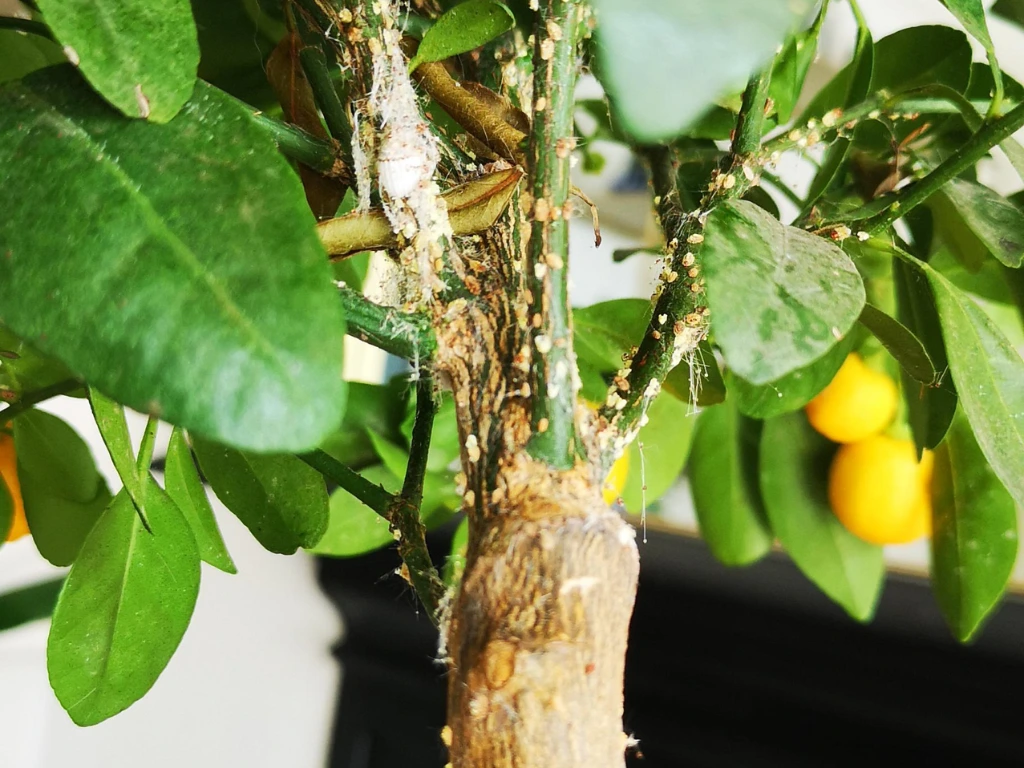
If you’re seeing your tree’s leaves curl up, develop spots, or if there are sticky residues on the branches, you may have a pest problem. Pests are more common than you might think, and they can be sneaky little invaders that harm your tree over time.
Common Pests to Watch For:
-
Aphids: Tiny, soft-bodied insects that can weaken your tree by sucking out the sap.
-
Spider Mites: These tiny creatures leave behind speckled leaves and fine webbing.
-
Scale Insects: These brown, round pests attach themselves to the stems and leaves of your tree.
How to Combat Pests on Your Calamondin Tree
-
Natural Predators: Invite ladybugs, lacewings, and other beneficial insects to your garden. They’re natural predators of aphids and spider mites, so they’ll help keep the population under control.
-
Neem Oil: Neem oil is an organic, non-toxic pesticide that works wonders against a wide range of pests. It’s safe for your tree and the environment!
-
Insecticidal Soap: This is an effective, gentle option for getting rid of pests. Just spray it directly onto the affected areas, and the pests will be gone in no time.
Stay on top of pest control by regularly checking your tree for signs of trouble. The sooner you spot them, the easier it will be to fix the issue.
Poor Fruit Production: Where Are the Fruits?
One of the biggest rewards of caring for calamondin trees is their juicy, fragrant fruits. But what happens when your tree is thriving in every other way, yet you’re not getting the fruit you expect? It’s frustrating, but there’s usually a clear solution.
Why Isn’t My Calamondin Tree Producing Fruit?
-
Insufficient Sunlight: Calamondin trees need plenty of sunlight to produce fruit. If your tree is in the shade or not getting enough direct sunlight, it may fail to flower or fruit properly.
-
Pollination Problems: Calamondin trees rely on pollination to set fruit. If there aren’t enough bees or other pollinators around, your tree may not produce as much fruit.
-
Nutrient Imbalance: A lack of phosphorus in your tree’s diet can lead to poor fruit production. Make sure your tree is getting all the nutrients it needs to thrive.
How to Get Your Calamondin Tree to Fruit
-
Increase Sunlight: Move your tree to a sunnier location where it can get at least 6 hours of direct sunlight each day. If you’re growing Calamondin indoors, consider using a grow light.
-
Hand Pollination: If your tree is lacking natural pollinators, you can hand-pollinate by gently transferring pollen from one flower to another with a soft brush. It’s an easy and effective way to boost fruit production.
-
Fertilize with Phosphorus: Use a fertilizer that is rich in phosphorus to encourage fruiting. You can also look for fertilizers specifically designed for citrus trees.
Leaf Spots and Fungal Infections
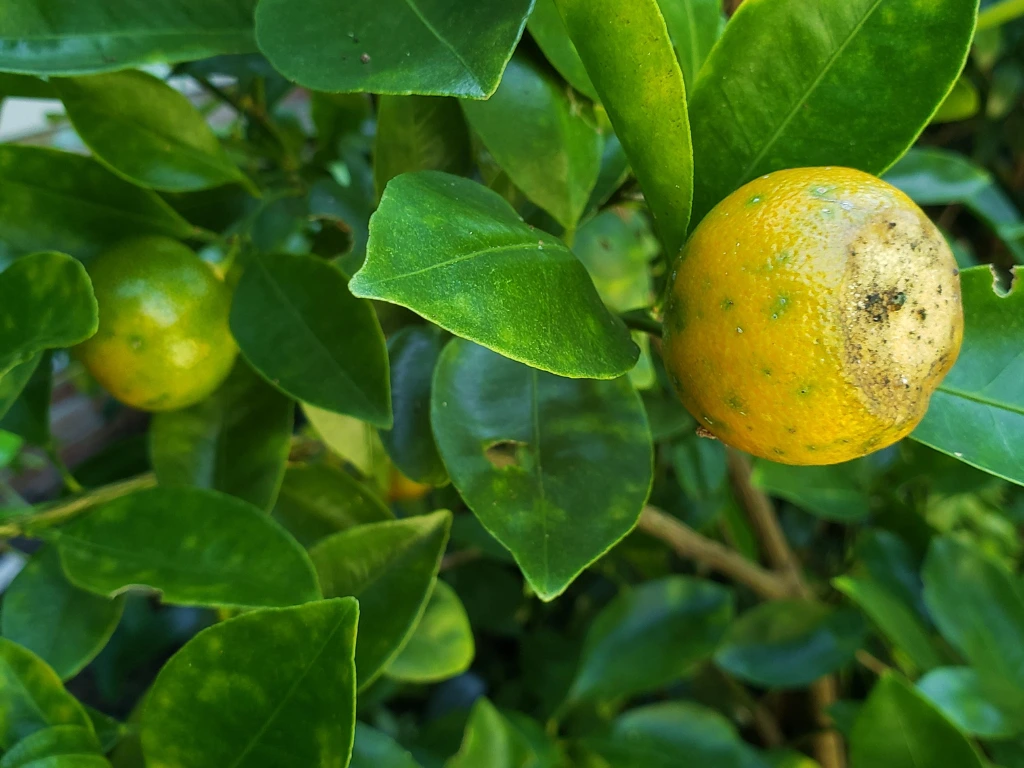
Seeing spots or lesions on your calamondin’s leaves can be alarming. More often than not, this is a sign of a fungal infection or excessive moisture. Don’t worry; it’s treatable!
What Causes Leaf Spots?
-
Fungal Infections: Fungal diseases like anthracnose or citrus scab can cause unsightly brown or black spots on your tree’s leaves.
-
Excess Moisture: When your tree is overwatered or if it’s planted in a location with poor drainage, moisture can accumulate around the leaves, encouraging fungal growth.
How to Treat Leaf Spots
-
Pruning: Start by removing any infected leaves to prevent the disease from spreading. Pruning also helps improve airflow around the tree.
-
Fungal Treatments: Use an antifungal solution or copper-based fungicide to treat the disease. Be sure to follow the manufacturer’s instructions.
-
Improve Air Circulation: Make sure your tree is planted in an area with plenty of airflow to help keep the leaves dry and discourage fungal growth.
Best Practices for Calamondin Care
Now that you know how to fix common problems, let’s talk about the best practices that will keep your tree healthy and thriving.
Watering and Soil Requirements
Proper watering is essential for the health of your tree. Calamondin trees like slightly acidic, well-draining soil. Too much water can lead to root rot, while too little can stress the tree.
Watering Tips:
-
Water your tree when the top inch of soil feels dry, but avoid letting the tree sit in water.
-
Ensure that the soil drains well and doesn’t hold onto too much moisture, which could lead to root problems.
Fertilization for Healthy Growth
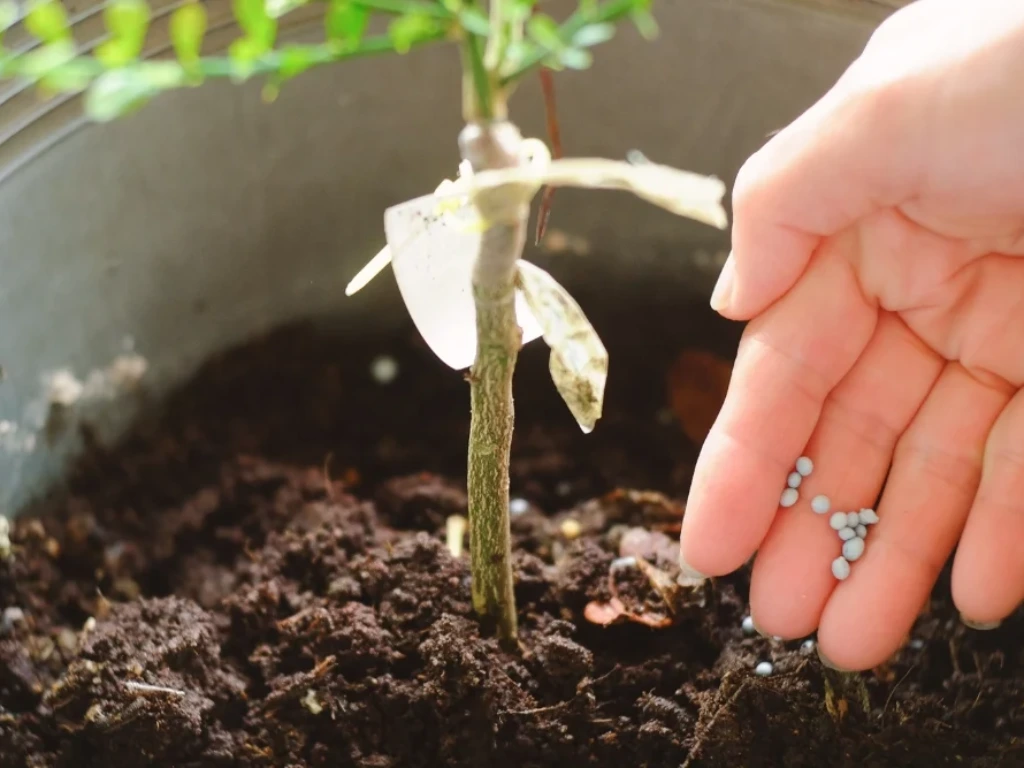
Just like us, trees need the right nutrients to stay healthy. Calamondin trees benefit from a balanced fertilizer that includes essential elements like nitrogen, phosphorus, and potassium.
When to Fertilize:
-
Apply fertilizer during the growing season (spring to early fall). Avoid fertilizing in winter when the tree is dormant.
Pruning and Maintenance
Pruning is essential to keep your tree in top shape. Removing dead or damaged wood helps your tree grow stronger and improves its ability to produce fruit.
Pruning Tips:
-
Prune in early spring, before new growth begins.
-
Focus on removing any dead, damaged, or diseased branches to improve the overall health of the tree.
Frequently Asked Questions (FAQ)
Q1: Why are the leaves on my calamondin tree turning yellow?
-
Yellow leaves are usually caused by nutrient deficiencies, overwatering, or pests. Check your tree’s water schedule, fertilization, and pest control practices.
Q2: How often should I water my calamondin tree?
-
Water when the top inch of soil is dry. Ensure the soil drains well to avoid root rot.
Q3: How can I prevent pests on my calamondin tree?
-
Regularly check for pests, and use neem oil or insecticidal soap if needed. Encourage natural predators like ladybugs to help control the pest population.
Q4: What’s the best way to ensure my calamondin tree produces fruit?
-
Ensure your tree gets enough sunlight, use phosphorus-rich fertilizer, and hand-pollinate if necessary.
Conclusion
Caring for your calamondin trees doesn’t have to be difficult! By addressing common problems like yellowing leaves, pests, and poor fruit production, and following best practices for watering, fertilization, and pruning, you’ll have a healthy tree that rewards you with lush greenery and juicy fruit.
Remember, gardening is all about patience and learning as you go. With the right care, your calamondin tree will thrive, and you’ll enjoy its beauty and fruit for years to come. Ready to start making changes? Get started today and watch your tree flourish! Happy gardening!

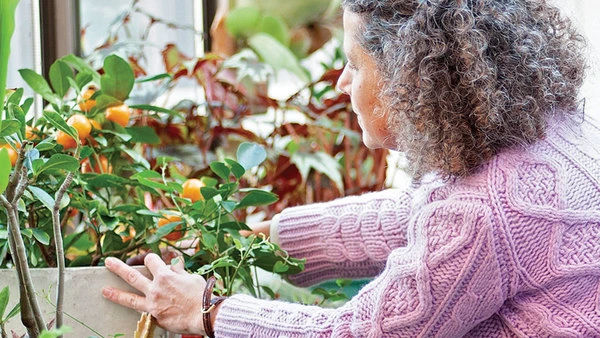
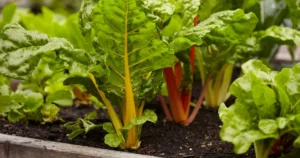
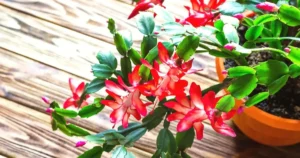
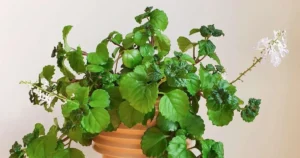
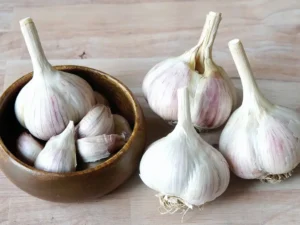
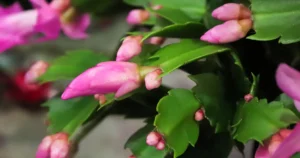
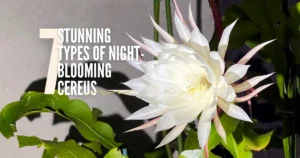
I have a wonderful calamondin tree that flowers and produces fruit.
I grew several trees from the seeds in the fruit. They are 2-3 feet tall but they have never flowered. They also have thorns.
What should I expect from these seedlings?
Sincerely,
Kurt Green
Thank you for reaching out!
Regarding your seedlings, it’s not uncommon for calamondin trees grown from seed to take a while to flower or bear fruit. Typically, calamondin trees from seed can take anywhere from 3 to 5 years to mature enough to flower and produce fruit. Some might even take longer, depending on factors like growing conditions and care.
As for the thorns, this is also typical for many citrus seedlings. The thorns usually appear as the tree grows, especially in younger plants. Over time, some trees may lose their thorns as they mature, but not always.
In addition, seedlings often have some genetic variability, so there’s a chance that the fruit from your seed-grown trees may differ slightly in taste or appearance from the parent tree. They may not be identical to the original tree in terms of fruit production, flavor, or other characteristics.
If you’re hoping for fruit sooner, consider taking cuttings from your original tree, as they’ll root faster and produce fruit more quickly compared to starting from seed.
Keep up the good work with your calamondins, and feel free to reach out if you need any more tips on growing them!
Best regards!